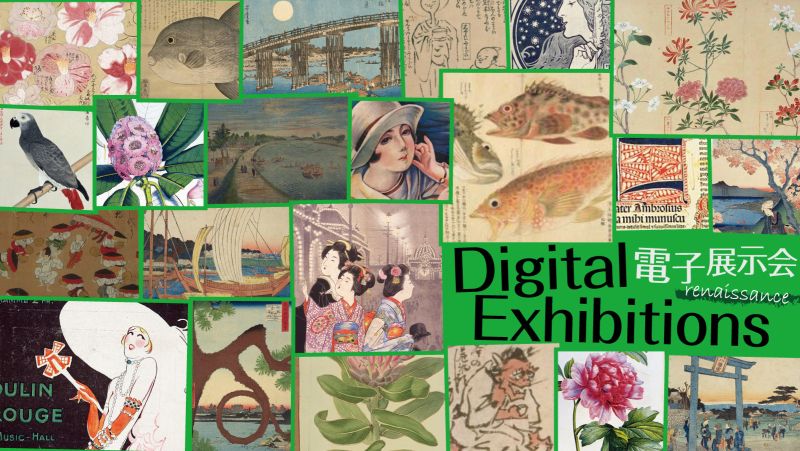Imasugata: The old and the new during the late Meiji era

Imasugata (today's fashion, NDL Call Number 寄別 1-8-1-10) is a series of paintings of beautiful women, published in four installments by YAMAMOTO Shōun between 1906 and 1909.
YAMAMOTO was a prominent newspaper artist whose drawings of current events, the latest fashions, and landscapes from throughout Japan were used in the frontispieces and other illustrations of the Fuzoku gaho (Fashion illustrated), a leading magazine of the Meiji era. Well known for his use of traditional Japanese techniques, Imasugata is YAMAMOTO's portrayal of women's fashion in the late Meiji era.
The Imasugata series comprises portraits of beautiful women in a variety of formats. Some have no background at all, in others the margins are decorated with pictures of flowers, shrubs, and other elements taken from landscapes. These portraits show the facial expressions and gestures as well as clothing and accessories that were commonly seen in daily life during the late Meiji era. The changing seasons are also depicted through the use of plants and flowers in the margins of the portrait.
Many of the pictures show women in traditional kimonos, but a handful also show Western attire. YAMAMOTO undoubtably had the opportunity to keep up with the latest fashions of the time through his work for Fuzoku gaho. YAMAMOTO also worked on another Fuzokugaho feature called Ryūkō-mon (Gateway to fashion) which introduced readers to the latest fashions of the day, and while YAMAMOTO's specialty was drawing the patterns used on kimonos, he also introduced rings and ribbons and other aspects of Western culture that were popular at the time.
In fact, in the Imasugata series, YAMAMOTO accurately depicts the latest fashions of the time, showing women wearing kimonos with open collars that reveal decorative half collars underneath, a young lady wearing a very in-vouge lace dress, and a schoolgirl wearing hakama--a pant-like garment worn over a short kimono.
Nor are such details limited to the clothing. Also depicted is a wide variety of objects that were introduced from the West, including chairs and other furniture, telephones, and women's accessories such as stoles.
Even as it portrays women embracing Western culture, Imasugata also depicts customs and manners characteristic of the Edo period. The women of Imasugata are seen performing a variety of traditional activities--smoking a pipe, babysitting, or embroidering--even as they embrace the latest fashions from a new culture.
YAMAMOTO sometimes worked creating original dyeing diagrams for kimonos, so he was uniquely qualified to beautifully depict the patterns used for fashionable kimonos.
The Imasugata series comprises more than fifty portraits, each of which is a valuable resource for learning about not just the latest fashions of the day but about the traditions of Edo-period Japan. The same can be said of the magazine Fuzoku gaho, which is also an invaluable reference material for understanding the fashions of the era.

